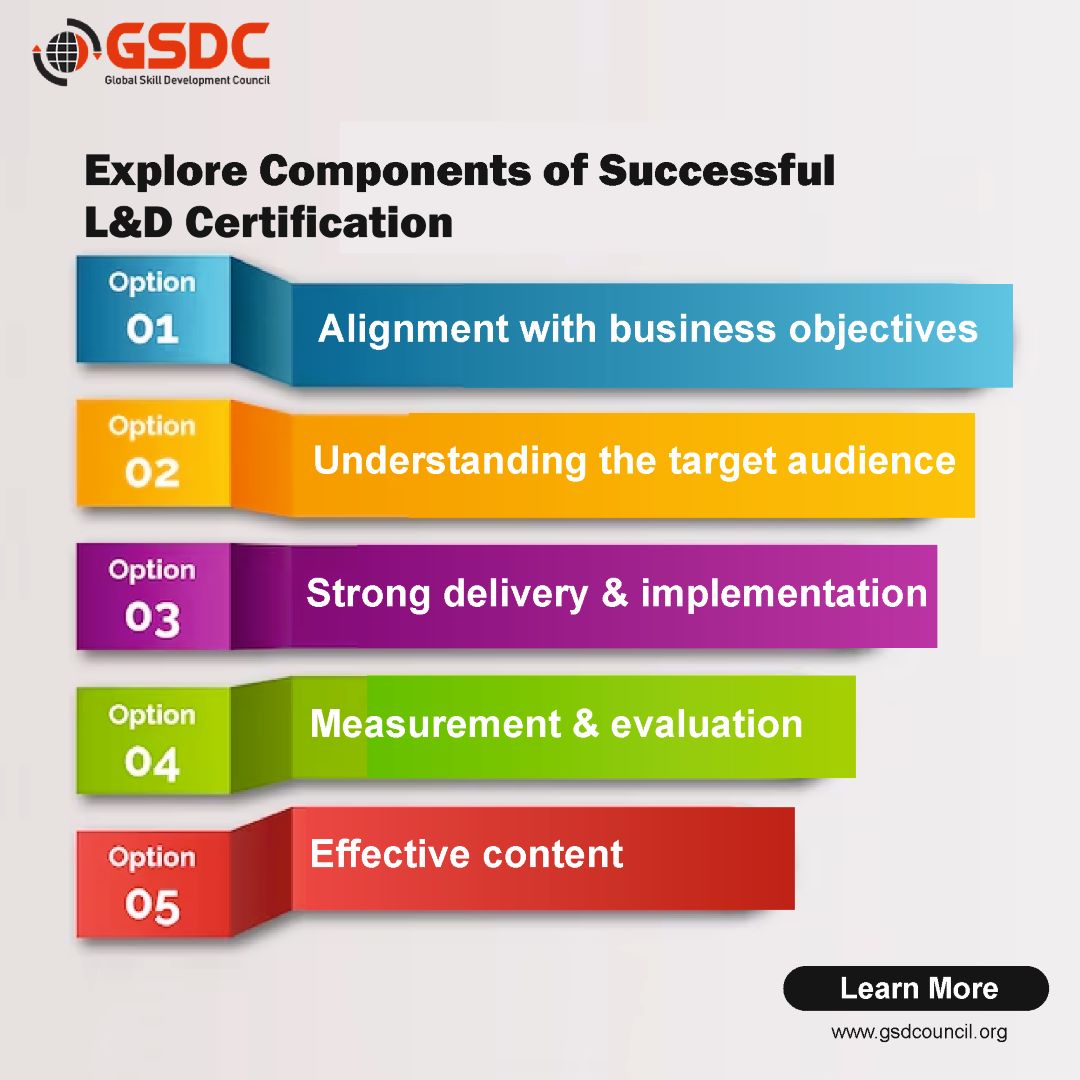L&D certification establishes your credibility and professional standing. It demonstrates your commitment to ongoing development and validates your expertise to employers, colleagues, and clients. Certification serves as tangible proof of your skills and can differentiate you from non-certified professionals in a competitive job market.
L&D certification can significantly enhance your career prospects. It positions you as a qualified professional capable of taking on higher-level roles and responsibilities. Certification may be a requirement or a preferred qualification for promotions, leadership positions, or specialized L&D roles within organizations. It expands your career options and increases your earning potential.
Following are the Components of Successful L&D Certification:

Alignment with Business Objectives:
This involves ensuring that the learning and development (L&D) certification program is directly linked to the broader goals and objectives of the organization. It should support the company's strategic vision and address specific skills or knowledge gaps that are crucial for achieving those objectives.
This alignment ensures that the certification program delivers tangible value to the organization by helping it meet its strategic goals. It also makes it easier to garner support and resources from senior management.
Understanding the Target Audience:
It's critical to have a clear understanding of the individuals who will participate in the certification program. This includes their current skill levels, learning preferences, job roles, and career aspirations.
This information guides the design and delivery of the program. Tailoring content to the specific needs and characteristics of the audience increases engagement and effectiveness.
Effective Content:
This involves creating high-quality learning materials, which may include written content, multimedia resources, interactive exercises, and assessments.
The content should be well-structured, relevant, and engaging. It's the heart of the certification program and is instrumental in ensuring that learners acquire the necessary knowledge and skills.
Strong Delivery and Implementation:
This pertains to how the certification program is delivered to learners. It encompasses the instructional methods, teaching techniques, facilitation skills of instructors, and the overall learning experience.
A well-delivered program ensures that learners are actively engaged, motivated, and able to apply what they've learned in real-world situations. It creates a positive learning environment and reinforces retention.
Measurement and Evaluation:
This involves assessing the effectiveness of the certification program. It includes tracking metrics related to learner performance, satisfaction, and the impact of the training on organizational goals.
Measurement and evaluation provide valuable feedback on the program's success. It helps identify areas for improvement, justifies the investment in L&D, and demonstrates the value of the certification program to the organization.
Operationalizing Learning Activities Across the Organization:
This means integrating the certification program into the broader organizational structure. It involves considerations like scheduling, resource allocation, and ensuring that the program fits seamlessly into the workflow of employees.
When learning activities are seamlessly integrated into the organization, it minimizes disruptions and encourages continuous learning. It also reinforces the idea that learning is a fundamental part of the organizational culture.
In summary, a successful L&D certification program must be strategically aligned with business objectives, tailored to the needs of the target audience, deliver effective content through strong implementation, be measurable and evaluated for effectiveness, and be seamlessly integrated into the operations of the organization. This holistic approach ensures that the certification program not only imparts valuable skills and knowledge but also contributes significantly to the overall success of the organization.


No comments yet